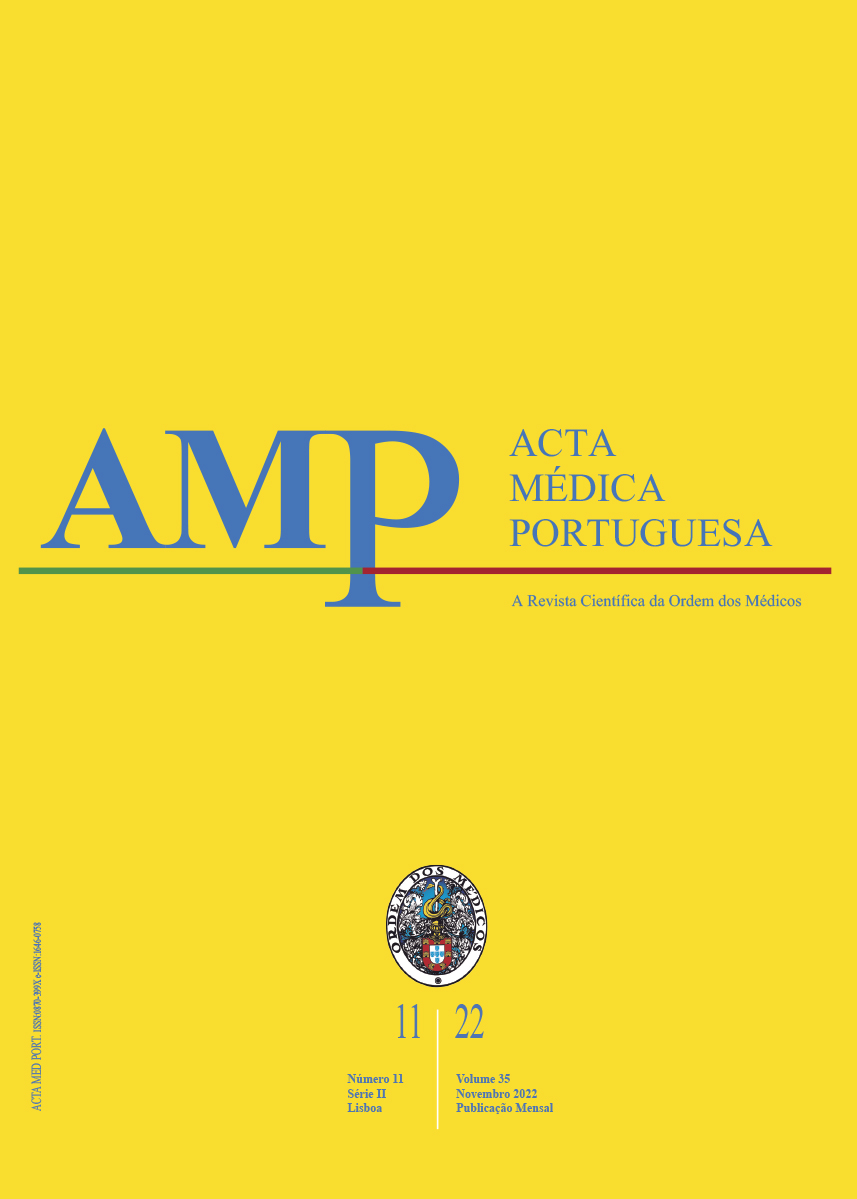Travel-Related Diseases and Injuries in Children and Adolescents: A Post-Travel Surveillance Questionnaire Assessment
DOI:
https://doi.org/10.20344/amp.16782Keywords:
Accident, Adolescent, Child, Disease, Travel, Travel-Related Illness, Wounds and InjuriesAbstract
Introduction: Children and adolescents are a relevant and increasing proportion of travelers. Injuries and infectious diseases in children are safety concerns when traveling. However, data on diseases and injuries during international travels in children are not available. The aims of this study were to analyze travel-related diseases and injuries among pediatric travelers during and after international trips, to identify risk factors for travel-associated disease, and to evaluate the compliance and effectiveness of the recommendations provided in pre-travel appointments.
Material and Methods: We enrolled travelers aged under 18 years attending a pre-travel clinic, in a tertiary hospital (2017 - 2019); 223 of the 370 pediatric travelers attending the pre-travel clinic were included. The study was based on a questionnaire designed to address health and safety issues – vaccines and chemoprophylaxis, including side effects, the occurrence of disease or injury, diagnosis, treatment, and outcomes.
Results: The median age at pre-travel evaluation was eight years; 39.7% of the travelers were adolescents, 52.5% were female. The participants traveled to 40 countries across four continents, with a median travel duration of 14.5 days. Asia was the most visited continent. Traveling was safe for 84.8%. From 34 travelers who had illness/injury, gastrointestinal symptoms were elicited in 41.2%. Sixteen (47.1%) travelers required an urgent medical appointment at the destination, and no one was hospitalized. Destinations in Africa and longer trips were significantly associated with a higher occurrence of disease/injury (p = 0.023 and p < 0.001, respectively). In a multivariable model, traveling to Africa was still significantly associated with travel-related disease/injury [OR = 2.736 (1.037 - 7.234)].
Conclusion: Disease/injury occurred in 15.2% of pediatric travelers. Even though 47.1% of the travelers required an urgent medical appointment, the developed conditions were not severe enough to warrant hospitalization. Travels to Africa and longer trips seem to be associated with a higher risk of disease and injury.
Downloads
References
UNWTO Tourism Highlights; 2019. [cited 2019 Nov 11]. Available from: https://www.e-unwto.org/.
Hunziker T, Berger C, Staubli G, Tschopp A, Weber R, Nadal D, et al. Profile of travel-associated illness in children, Zürich, Switzerland. J Travel Med. 2012;19:158–62.
Hagmann S, Neugebauer R, Schwartz E, Perret C, Castelli F, Barnett ED, et al. Illness in children after international travel: analysis from the GeoSentinel Surveillance Network. Pediatrics. 2010;125:e1072–80.
Maloney SA, Weinberg M. Prevention of infectious diseases among international pediatric travelers: considerations for clinicians. Semin Pediatr Infect Dis. 2004;15:137–49.
Centers for Disease Control and Prevention. Travelers’ health. [cited 2020 Oct 4]. Available from: https://wwwnc.cdc.gov/travel/page/children.
Leuthard D, Berger C, Staubli G, Nadal D, Schmid S, Hamer D, et al. Management of children with travel-related illness evaluated in a
pediatric emergency room. Pediatr Infect Dis J. 2015;34:1279–82.
Centers for Disease Control and Prevention. Surveillance for travelrelated disease -GeoSentinel Surveillance System, United States,
–2011. MMWR Surveill Summ. 2013;62:1-23.
Wilder-Smith A, Boggild AK. Sentinel Surveillance in Travel Medicine: 20 Years of GeoSentinel Publications (1999–2018). J Travel Med. 2018;25 (in press). doi: 10.1093/jtm/tay139.
van Rijn SF, Driessen G, Overbosch D, van Genderen PJ. Travel-related morbidity in children: a prospective observational study. J Travel Med. 2012;19:144–9.
Freedman DO, Chen LH, Kozarsky PE. Medical considerations before international travel. N Engl J Med. 2016;375: 247–60.
Mangalore RP, Johnson DF, Leder K. Travellers visiting friends and relatives: a high-risk, under-recognised group for imported infectious diseases. Intern Med J. 2018;48:759-62.
Marasinghe DH, Cheaveau J, Meatherall B, Kuhn S, Vaughan S, Zimmer R, et al. Risk of malaria associated with travel to malaria-endemic areas to visit friends and relatives: a population-based case-control study. CMAJ Open. 2020;8:E60-8.
Downloads
Published
How to Cite
Issue
Section
License
Copyright (c) 2022 Acta Médica Portuguesa

This work is licensed under a Creative Commons Attribution-NonCommercial 4.0 International License.
All the articles published in the AMP are open access and comply with the requirements of funding agencies or academic institutions. The AMP is governed by the terms of the Creative Commons ‘Attribution – Non-Commercial Use - (CC-BY-NC)’ license, regarding the use by third parties.
It is the author’s responsibility to obtain approval for the reproduction of figures, tables, etc. from other publications.
Upon acceptance of an article for publication, the authors will be asked to complete the ICMJE “Copyright Liability and Copyright Sharing Statement “(http://www.actamedicaportuguesa.com/info/AMP-NormasPublicacao.pdf) and the “Declaration of Potential Conflicts of Interest” (http:// www.icmje.org/conflicts-of-interest). An e-mail will be sent to the corresponding author to acknowledge receipt of the manuscript.
After publication, the authors are authorised to make their articles available in repositories of their institutions of origin, as long as they always mention where they were published and according to the Creative Commons license.









